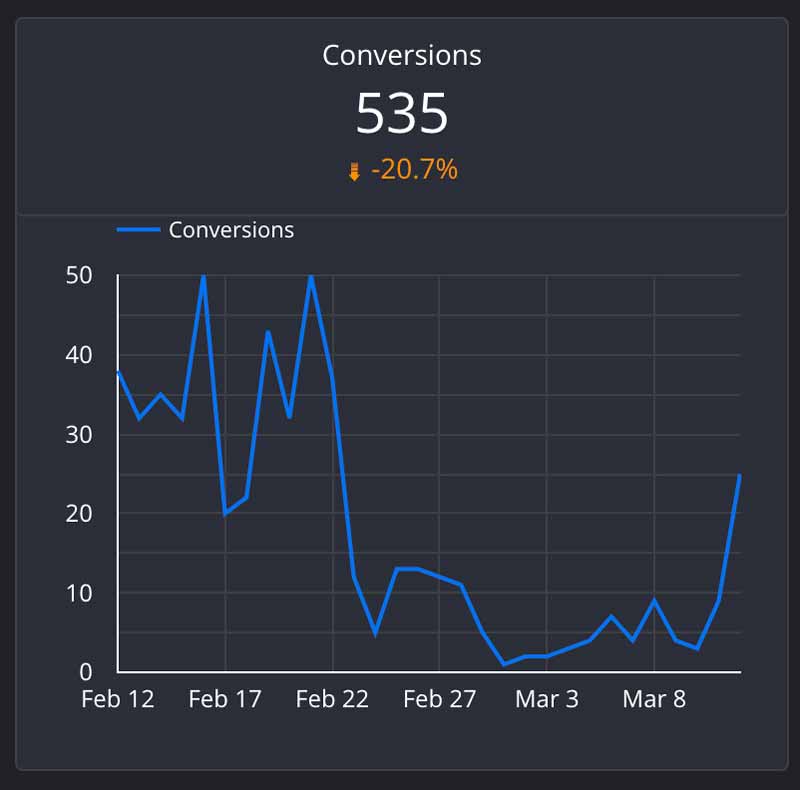Many advertisers are reporting severe performance drops in ROAS, Conversions, CPA and AdSpend after switching to Consent Mode v2. We at Fuel LAB found ourselves in the same situation, and we got confirmation from Google on the reason why.
Table of Contents
What happens when you switch to Consent Mode
When you switch your tags firing behavior to meet DMA requirements, also known as Consent Mode, depending on the type of implementation you have carried on, the signals arriving both to your Analytics and Advertising platforms will change dramatically.
While there are 2 ways to implement Consent Mode (Basic Implementation and Advanced Implementation) There are actually three scenarios to face, and most likely, you fall into scenario three.
De Facto, Consent Mode Basic was the standard of Consent Mode until the end of 2023, and users should have been already using it since a couple years, to meet European (but not only) privacy laws requirements.
Consent Mode Advanced, is a better and new way to ensure a less lossy data collection and processing, leveraging the AI within Google systems, to reconstruct conversion attribution and traffic data in a totally compliant way, even without cookies, nor user consent.
So, here are the three scenarios advertisings are facing, and the consequent resulting situations:
| Scenario | Result |
|---|---|
| You are using Consent Mode Basic since years. | No relevant changes, but you should start using Enhanced Conversions ASAP. |
| You have been using Consent Mode Basic, and you have moved to Consent Mode Advanced, with Enhanced Conversions tracking. | You should expect an uptick in Conversion Rate by 5/10%. |
| You never used Consent Mode, and all of a sudden you have implemented Consent Mode Advanced or Basic. | You are experiencing a severe drop in performance. |
Why did Google Ads performance drop after enabling Consent Mode
If you implemented Consent Mode, be it basic or advanced, switching from an unfiltered stream of data coming from your properties, your campaigns will be in a state of shock, and thus losing performance seriously, especially if you were relying on Smart Bidding strategies, such as Target ROAS (and also, but with less effect, Target CPA).
As you know, each campaign is associated with unique iterations of Google’s algorithms and AI processes. Each campaign, pretty much as each session you would make with ChatGPT, is unique and starts collecting data at campaign launch.

The modeling and performance optimization takes nominally a couple weeks to start working properly, and that’s because it evaluates every new piece of information with the historical data it collected. So, when all of a sudden data changes dramatically, the system is profoundly confused onto what’s going on. Virtually, it will ask itself questions like:
- Am I doing it wrong?
- Has the market changed completely?
- Should I reduce the bid?
This is very similar to any disruptive and brusc change you’d do on a Google Ads campaign, with the difference that here we are impacting heavily not an environmental factor to the campaign (like budget, targets, and so on), but the very base of how the system works: high quality data streams.
Why did Microsoft Advertising (Bing ads) performance drop after enabling consent mode
While we were able to easily debug this with Google, Microsoft has not been neither as attentive, present, responsive, nor competent at addressing the issue. We have noticed the same performance drop in Bing Ads, with the usual Microsoft-style metric skewing. While Google will spend less when it loses confidence in the results it can bring with a Smart Bidding campaign, Bing will just start shooting to the stars its spend, while conversions flatline.

Bing’s response to our enquiry, was to say that our tracking was not done correctly, claiming that the conversion can’t fire, or that the UET tag isn’t set properly. Of course, everything was set properly, exactly like it was before Consent Mode implementation, and was working flawlessly. Moreover, we have re-checked UET tag coverage and Conversion Tracking using Microsoft’s tools, and everything was reported to work normally.
In other words, as usual, Microsoft Support is terrible, and they have no clue on what’s going on, but, my assumption from experience is that the same situation as in Google is impacting your Bing Ads account, and the same solution applies to both cases.
How to recover performance after enabling Consent Mode
I’ve been discussing this with our Google Partner accounts and the strategy we are going to follow is the current:
- Firs of all, verify that your Consent Mode implementation is working Correctly
- Secondly, make sure you have enabled Enhanced Conversions tracking
- Then, take your target ROAS and target CPA’s down. You need to remove the bottleneck created, and allow the campaign to learn, adapt and optimize. Raising a bit your budgets would also be a good idea, to speed things up.
- After two weeks, try lowering gradually your targets (be it ROAS or CPA, lower it be 10% bi-weekly).
This approach should gradually bring your campaigns to shine bright, and even brighter in time, as the machine learning models learn from the available observed and modeled data.
Bonus: Looker Studio lost opportunity meter report
If you have a lot of campaigns and a lot to go through, we have a free Looker Studio report that will be extremely useful to immediately identify those campaign losing a lot of share due to AdRank and bid-tied ranking.

Pietro Mingotti is an Italian entrepreneur and digital marketing specialist, best known as the founder and owner of Fuel LAB, a leading digital marketing and technical marketing agency based in Italy, operating worldwide. With a passion for creativity, innovation, and technology, Pietro has established himself as a thought leader in the field of digital marketing and has helped numerous companies achieve their marketing goals.

Great post! Thanks for sharing the details, especially about the lower targets.
However, an important piece seems to be missing. Eligibility for Google Ads conversion modeling requires at least 700 ad clicks per day for 7 days, which many accounts can’t reach.
This means smaller accounts are left in the dark with low or sometimes no results, even if they have enhanced conversions set up. How do you handle this challenge for small websites?
Hi Eric, thanks for the comment.
I get your point, and currently aside from Server Side Tracking, I’m unaware of solutions for smaller websites as we normally work with large enterprise websites only.
I think that when it gets to this, considering services like Jentis, Elevar, Stape and so on could be a solution, but I’ve not tested those yet with the specific usage of Google Ads campaigns.
Maybe someone else in the comments will have some updated ideas on this specific case.